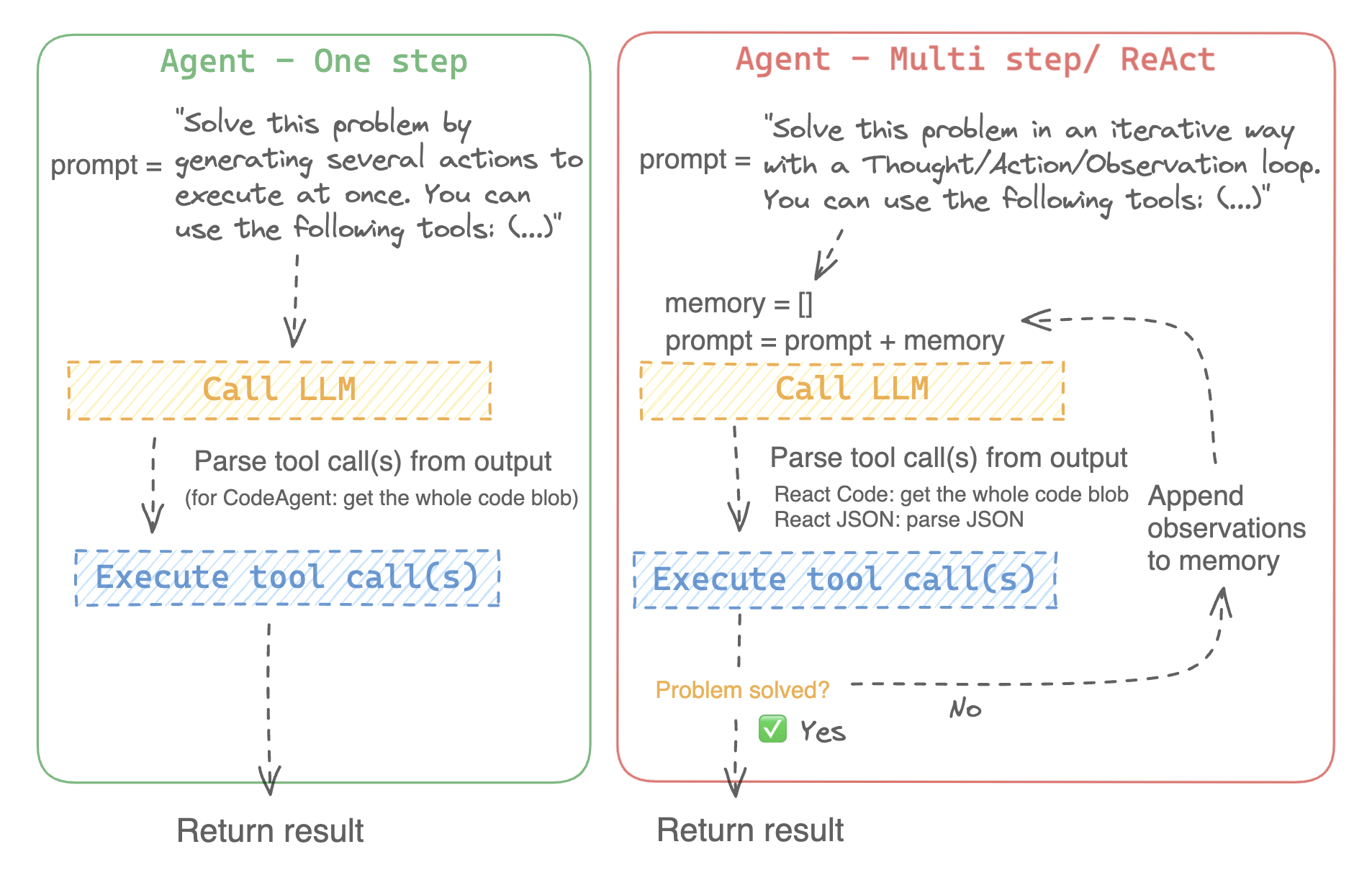47 lines
2.4 KiB
Markdown
47 lines
2.4 KiB
Markdown
<!--Copyright 2024 The HuggingFace Team. All rights reserved.
|
|
|
|
Licensed under the Apache License, Version 2.0 (the "License"); you may not use this file except in compliance with
|
|
the License. You may obtain a copy of the License at
|
|
|
|
http://www.apache.org/licenses/LICENSE-2.0
|
|
|
|
Unless required by applicable law or agreed to in writing, software distributed under the License is distributed on
|
|
an "AS IS" BASIS, WITHOUT WARRANTIES OR CONDITIONS OF ANY KIND, either express or implied. See the License for the
|
|
specific language governing permissions and limitations under the License.
|
|
|
|
⚠️ Note that this file is in Markdown but contain specific syntax for our doc-builder (similar to MDX) that may not be
|
|
rendered properly in your Markdown viewer.
|
|
|
|
-->
|
|
# How do multi-step agents work?
|
|
|
|
The ReAct framework ([Yao et al., 2022](https://huggingface.co/papers/2210.03629)) is currently the main approach to building agents.
|
|
|
|
The name is based on the concatenation of two words, "Reason" and "Act." Indeed, agents following this architecture will solve their task in as many steps as needed, each step consisting of a Reasoning step, then an Action step where it formulates tool calls that will bring it closer to solving the task at hand.
|
|
|
|
React process involves keeping a memory of past steps.
|
|
|
|
> [!TIP]
|
|
> Read [Open-source LLMs as LangChain Agents](https://huggingface.co/blog/open-source-llms-as-agents) blog post to learn more about multi-step agents.
|
|
|
|
Here is a video overview of how that works:
|
|
|
|
<div class="flex justify-center">
|
|
<img
|
|
class="block dark:hidden"
|
|
src="https://huggingface.co/datasets/huggingface/documentation-images/resolve/main/transformers/Agent_ManimCE.gif"
|
|
/>
|
|
<img
|
|
class="hidden dark:block"
|
|
src="https://huggingface.co/datasets/huggingface/documentation-images/resolve/main/transformers/Agent_ManimCE.gif"
|
|
/>
|
|
</div>
|
|
|
|

|
|
|
|
We implement two versions of ToolCallingAgent:
|
|
- [`ToolCallingAgent`] generates tool calls as a JSON in its output.
|
|
- [`CodeAgent`] is a new type of ToolCallingAgent that generates its tool calls as blobs of code, which works really well for LLMs that have strong coding performance.
|
|
|
|
> [!TIP]
|
|
> We also provide an option to run agents in one-shot: just pass `single_step=True` when launching the agent, like `agent.run(your_task, single_step=True)` |